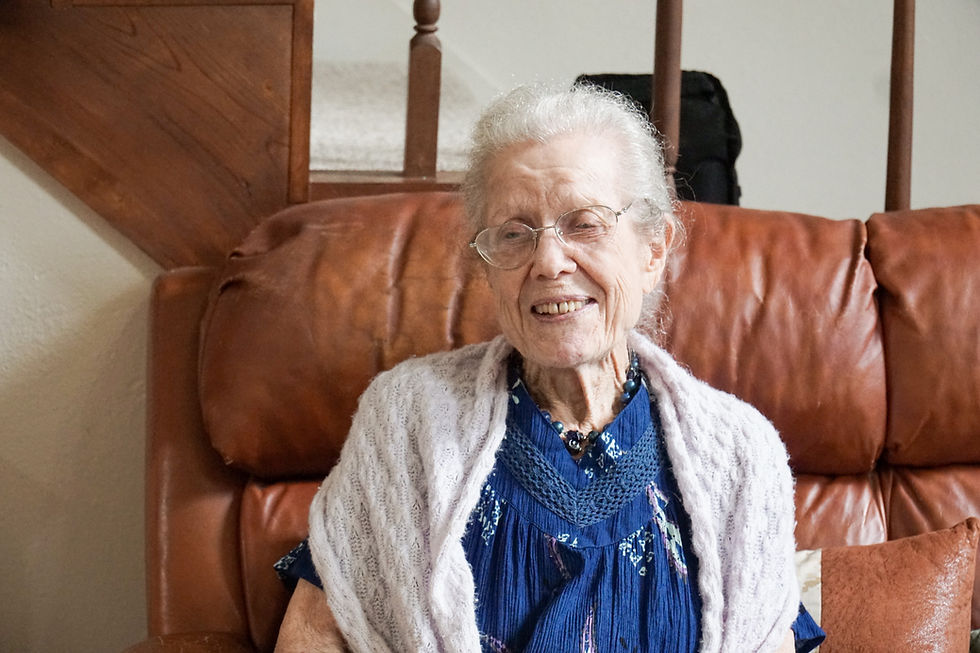Aging in Place: Creating a Safe and Meaningful Home Environment
- Lauren Fallat, LPC LPAT ATR-BC

- Jul 17
- 3 min read

Aging in Place
For many older adults, the desire to age in place—to remain in their own homes as they grow older—is deeply rooted in a sense of independence, familiarity, and dignity. However, aging in place requires intentional planning and adaptation. As needs change over time, the home must evolve to support not just physical safety, but emotional well-being and a continued sense of belonging. This blog explores the core considerations and benefits of aging in place.
The emotional significance of remaining at home cannot be overstated. Home is often where memories reside, routines are established, and identity is reinforced. For older adults, staying in a familiar environment can promote stability, reduce anxiety, and support overall mental health. It offers a sense of control that may otherwise be lost in institutional settings.
Safety at Home
Safety is the foundational component of successful aging in place. Home modifications such as installing grab bars in bathrooms, removing tripping hazards, adding adequate lighting, and ensuring accessibility with ramps or stairlifts are essential. These changes not only prevent accidents but foster a sense of security and confidence.
In-home support services can make aging in place a viable option. Personal care aides, home health nurses, meal delivery programs, and transportation services bridge the gap between independence and needed assistance. These supports allow individuals to maintain their autonomy while receiving help tailored to their specific needs.
The Role of Technology
Technology also plays a vital role. Medical alert systems, remote monitoring, smart home devices, and virtual health appointments allow older adults to stay connected, safe, and supported. When used thoughtfully, technology can alleviate caregiver concerns and empower older adults to manage their health.
Emotional and social needs must be considered alongside physical ones, especially as individuals age and their circumstances change. The effects of loneliness and isolation can be particularly pronounced for seniors who are aging at home, particularly if they experience limited mobility or health challenges that restrict their ability to engage with the outside world. These emotional and social dimensions are just as vital to overall health as physical well-being, and neglecting them can lead to significant negative outcomes, including depression, anxiety, and a decline in cognitive function.
Maintaining community ties and social connections is critical to holistic well-being in older adults. This can take many forms, such as in-person visits from family and friends, participation in local social clubs, or even virtual gatherings that utilize technology to bridge the gap between physical distance and emotional closeness. For instance, regular visits from loved ones can provide not only companionship but also a sense of belonging and purpose. Social clubs specifically designed for seniors can offer opportunities for engagement through shared interests, fostering friendships and support networks that are essential for emotional health.
Moreover, virtual gatherings have become an increasingly popular way to connect, particularly in the wake of advancements in technology and the recent global health challenges that have necessitated physical distancing. Video calls, online classes, and virtual game nights can all serve as valuable platforms for interaction, allowing seniors to maintain relationships and engage with others without the need for physical travel. These modern methods of communication can be particularly beneficial for those who may have mobility issues or live far from family and friends.
In addition to these social interactions, it is also important to consider the role of community resources in supporting emotional and social needs. Local organizations often provide programs specifically designed to combat loneliness among seniors, such as community centers that offer activities, workshops, and group outings. Engaging in these programs can help older adults feel valued and included, further enhancing their emotional well-being. Furthermore, outreach programs that connect volunteers with seniors can provide companionship and support, ensuring that those who are isolated have someone to talk to and share experiences with.
Family and Caregivers
Caregivers and family members play an important role in supporting aging in place. Honest conversations about needs, regular assessments, and a proactive approach to care can ease transitions and prevent crises. Aging in place is not static; it requires ongoing evaluation and adjustment.
Aging in place honors the desire for autonomy while providing a structure of support. With the right planning, resources, and compassionate care, older adults can continue living with dignity and purpose in the place they call home.
To Schedule an Appointment for Counseling or Art Therapy
To Schedule an appointment, please click here.
To learn more about Holistic Health Counseling Center, please visit our website at www.hhccnj.com
To learn more about Art Therapy, please visit our Art Therapy website at: https://www.arttherapynj.com/
If you or someone you know is suffering with Tinnitus, please visit our website for more information about how we can help at: www.HelpforTinnitus.com


